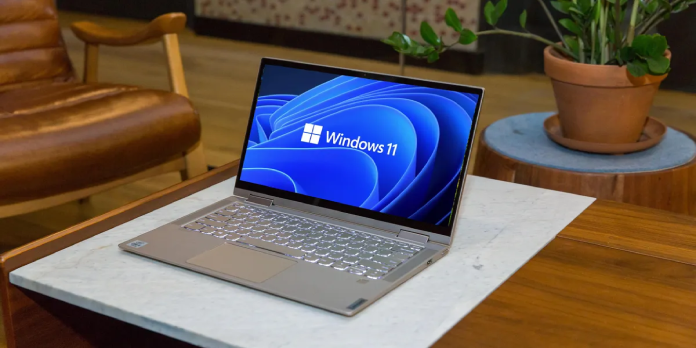Here we can see, “How to Change Bios Settings on Windows 11”
- Holding the designated key down while your computer boots are the only way to modify BIOS settings in Windows 11.
- You can perform that action from the Recovery menu in the Settings app on your PC.
- You must visit the firmware settings and modify a few security settings in order to enable AMD fTPM on Windows 11.
Changing your settings may be necessary if you want to ensure that your PC is operating properly. The majority of settings can be changed using the built-in settings programs.
On the other hand, accessing and changing many hardware settings requires entering the BIOS; they are inaccessible from the desktop.
The method of accessing the BIOS hasn’t changed in Windows 11, and it almost exactly matches that of earlier OS versions.
Read on to learn the best techniques for changing BIOS settings on Windows 11 if you’re interested in learning how to accomplish it.
What does BIOS do?
The motherboard’s BIOS chip, which houses motherboard firmware and settings, is in charge of initializing your hardware upon boot and launching the boot loader.
It is also used to set up your hardware, system, security, and boot preferences and initialise everything. It also allows you to overclock your hardware.
How does BIOS work?
When you hit the Power button, your computer’s BIOS first scans the CMOS for customized settings.
It then loads the device drivers and interrupt handlers, initializes the registers, and starts power management.
After that, it runs a power-on self-test to make sure the necessary hardware is operational. If everything is in order, your system settings will be shown, and the BIOS will decide whether any bootable devices are present.
Your operating system will launch after the bootable device has been located and the booting cycle has begun.
How can I change BIOS settings on Windows 11?
1. Use the BIOS shortcut key during the boot
-
- Keep pressing the Del key as your computer boots up.
- Now, Windows will start in BIOS.
Although it’s not a universal method, this is the simplest approach to accessing BIOS. There are two ways to find the correct key because different motherboards utilize different keys.
-
- Watch for any notification that says, “Press Key to enter setup,” or something similar during the startup process. The majority of the time, tapping this key will enable BIOS entry.
- Find the shortcut key by consulting your motherboard’s manual.
2. Use the Settings app
-
- In the Taskbar, click the Start button.
- Choose the Settings app next.
- Navigate to Recovery Options.
- Click Restart now in the Advanced startup section.
- To confirm, click Restart right now.
- Navigate to Troubleshoot.
- Choose Advanced choices.
- Choose UEFI Firmware Settings next.
- To confirm, click Restart.
- Windows should restart with a direct boot to BIOS.
When should I update my BIOS?
Now that you are familiar with the fundamentals, should you update as soon as the new version becomes available? No, there is no need to upgrade as long as your computer is operating normally.
If this particular fault doesn’t impact your PC, there’s no need to update your BIOS because these upgrades typically repair minor bugs and add compatibility for newer hardware.
Some updates add support for newer CPUs; therefore you must install them if you intend to upgrade your PC and buy a new CPU. An update may occasionally be helpful if you’re experiencing problems with a particular piece of hardware.
Update your BIOS only if it’s absolutely necessary because doing so carries some risk and could permanently damage your computer and prevent it from booting.
What is the difference between BIOS and UEFI?
While BIOS relies on an EPROM chip, UEFI stores the data in an.efi file on a separate partition. The GUI interface with mouse support, quicker boot times, TPM, and compatibility for Secure Boot are further benefits.
Along with enhanced support for larger disks, UEFI also offers discrete driver support that stores this data in its ROM.
The UEFI is clearly superior to the other when compared, and almost all contemporary motherboards use it.
Any of the methods listed in this guide can be used to gain access to the BIOS settings on Windows 11 before making any changes.
Most people prefer using the keyboard shortcut during boot because it is the quickest way to accomplish that.
However, you may always boot to BIOS using the Advanced startup settings if, for some reason this method isn’t working for you.
Conclusion
I hope you found this guide useful. If you’ve got any questions or comments, don’t hesitate to use the shape below.
User Questions
1. In Windows 11, how do I modify the BIOS settings?
-
- Start the settings. Navigate to System > Recovery.
- Select Troubleshoot > Advanced options > UEFI Firmware Settings from the Advanced boot-up panel.
- When you click Restart at the end, your computer will restart with UEFI/BIOS settings.
2. Do I require a BIOS update for Windows 11?
Many motherboard manufacturers will undoubtedly release updated BIOSes in preparation for the October 5th introduction of Windows 11. Although updating your BIOS is unnecessary for the new OS, some features, like TPM being activated by default, make sense.
3. Can you modify your BIOS?
NO! Each motherboard’s chipset and the Basic Input Output System are built-in code specifically for them. They are so specialized that they only function on the motherboard they were developed for; thus you cannot interchange them like you can with operating systems.
4. Changed bios setting for windows 11 and now my pc won’t boot.
Changed bios setting for windows 11 and now my pc won’t boot. from techsupport
5. So if you disable TPM 2.0 in your bios settings, does Windows …
So if you disable TPM 2.0 in your bios settings, does Windows 11 still boot? from Windows11



